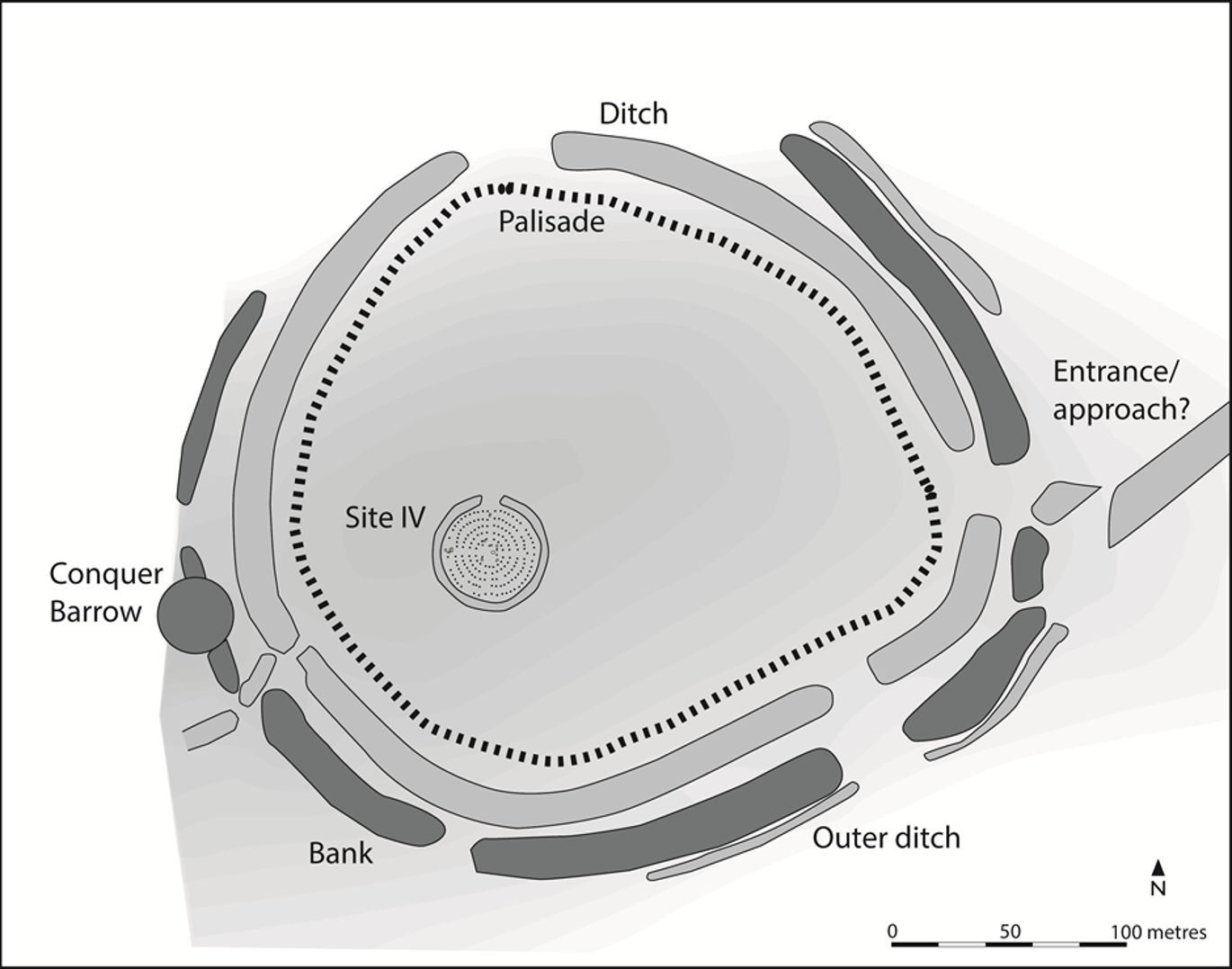
As an introduction this talk covered a number of megahenge sites, such as at Dorchester–on-Thames and the many examples in the Orkneys, Newgrange in Ireland with many associated features, although some are not now visible. These megahenges usually exist within a cluster of related features, often within a range of 5 km. They also seem to occur in certain places: near rivers. An example is the stream of the Gypsey Race in Yorkshire, which disappears and reappears on its course, through the chalk and which is accompanied by many prehistoric features, including England’s tallest, standing stone. They occur in open places away from the encompassing forest which would make access and travel much more difficult. A very good example is Wiltshire and Salisbury Plain. Here Avebury has many associated features. It is as if the major henges attract many other monuments and also attract people over long periods of time. Unusual landscapes, such as Cranbourne Chase in Dorset is where the cursus and other monuments seem to be associated with strange bumps in the ground. Another example is the Priddy Circles where the strange-seeming phenomenon of sinkholes make disconcerting appearances. Accessibility, as is afforded by the Ness of Brodgar in Orkney, is where a thin finger of land almost connects two sides of land with lochs on either side and is covered with numerous Neolithic constructions.
Dr Greaney’s research has focused on the Mount Pleasant megahenge in Dorchester (Dorset). It is significant, but has been ploughed flat so that its features can only be discerned from the air above as marks in the soil. It is on a slight hill and the inner area is about 5 ha. The outer feature is a bank with four gaps, which has a ditch inside it. Within the ditch was a palisade of wooden pillars, some of which had been deliberately burned, so providing examples of radiocarbon datable material, giving a general date of about 2500 BC. There is a possible avenue, the so-called Conquer Barrow on part of the bank and a circular feature inside the main henge (known as site four), which contained concentric circles of wooden posts. All these features (apart from the Barrow) used to be assumed as having been built over a lengthy period of time. However, Dr Greaney has researched in the archives of Dorchester Museum. She radiocarbon dated suitable items stored there from Wainwright’s excavations of the site in the early 1970s. She found that the main henge, the inner ditch and palisade and site four had all been built within 120 years. Animal bones have been found here, but there is no evidence of settlement at Mount Pleasant itself.

Next came a closer look at certain henges: Knowlton, which contained many surviving features and Durrington Walls, near Stonehenge, within which were 12, small buildings which is a big settlement for its time. Perhaps they had housed the builders of Stonehenge, or perhaps were used for ritual assemblies. Certainly, they were associated with large amounts of animal bones, whose teeth provided isotope analysis, revealing travel from a very wide area, together with very small amounts of cereals.
Mardon contains a mini henge with a complex house inside
Avebury , with its large henge, and two other smaller ones, shows no signs of houses, but there are Neolithic examples of these nearby. Generally, the dating comes to 2500 BC or thereabouts.
The Greyhound Yard henge measures 380 m along its long axis, within which is a wooden palisade which can be dated to about 2500 BC.
Generally Dr Greaney proposes a strong connection between megahenges and wooden palisades.
Finally, Dr Greaney used the word “frenzy“ to describe the proliferation of henge building at the end of the late Neolithic, which seems to come to an end as a new people using copper technology began to arrive from the Continent. Perhaps it was a determined effort to emphasise their way of life to the incomers. Or perhaps it was a kind of “last fling” before their way of life came to an end.
